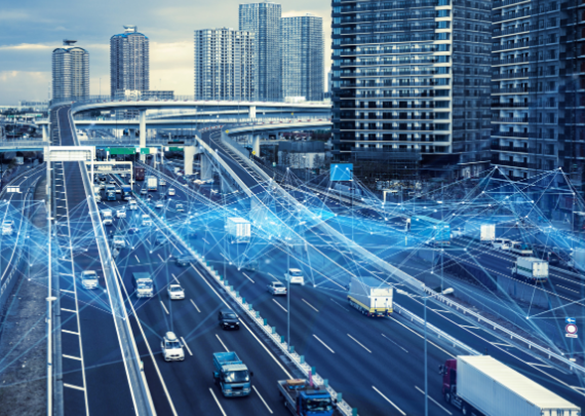Moving towards Smart Cities: How can IoT improve traffic management and tackle traffic congestion?
All cities face unprecedented traffic congestion problems, especially in the city center areas. Conventional cities can be transformed into “Smart Cities” by exploiting the paradigm of the Internet of Things (IoT).
Traffic management: Needs and challenges to be addressed
Urban areas across the world are facing several challenges because of growing populations [1]. Such huge masses of people are associated with various kinds of problems such as air pollution and traffic congestion. The concept of smart cities has been introduced to mitigate issues related to the growing urban population.
Traffic congestion is a major issue that causes significant air pollution, waste of time and energy, and high fuel consumption and happens across urban cities around the world. Initially, the traffic light control system was based on a fixed signaling scheme but that changed when, in 1982, the idea [2] of making traffic light control adaptive according to real-time traffic volume was introduced. This led to significant improvements in overall traffic congestion management [3]. The third generation of traffic signaling control features fully adaptive and dynamic decision-making. The traffic signaling schemes are modified according to the real-time traffic situation around an intersection.
MARVEL and the role of IoT in realization of Smart Cities
The Internet of Things (IoT) is a newer term that aims to provide new opportunities and possibilities to conventional cities. In the IoT model, virtually “everything” will be connected to the Internet. Thus, the paradigm of the Internet of Things (IoT) can play an important role in the realization of smart cities.
IoT-based traffic management solutions like MARVEL allow for the dynamic control of the traffic flow by onsite traffic officers through the Internet. MARVEL can address the aforementioned challenges by extracting valuable knowledge and commercial value from traffic-based data. Thus, MARVEL leads to more accurate predictions and better analytics for more efficient traffic management.
MARVEL will detect and collect traffic data for each road lane. The gathered data will be transferred from on-site sensors’ microcontrollers to base stations via Wi-Fi. The green light phase time (GLPT) is then calculated in the cloud by utilizing a dynamic algorithm and subsequently transferred back to the on-site microcontrollers. Then, the microcontrollers will alter the GLPT for each road lane and finally, the traffic officer will be able to see all the GLPT changes for each road lane on the traffic light monitoring application.
MARVEL’s ultimate aim is to support all the data-driven real-time application workflows and decision-making in modern cities, showcasing the potential to address societal challenges very effectively, by analysing traffic flows and traffic behaviour.
References
-
Misbahuddin, Syed, et al. "IoT based dynamic road traffic management for smart cities." 2015 12th International conference on high-capacity optical networks and enabling/emerging technologies (HONET). IEEE, 2015.Misbahuddin, Syed, et al. "IoT based dynamic road traffic management for smart cities." 2015 12th International conference on high-capacity optical networks and enabling/emerging technologies (HONET). IEEE, 2015.
[1]
-
Hunt, P. B., et al. "The SCOOT on-line traffic signal optimisation technique." Traffic Engineering & Control 23.4 (1982).Hunt, P. B., et al. "The SCOOT on-line traffic signal optimisation technique." Traffic Engineering & Control 23.4 (1982).
[2]
-
Cai, Chen, Chi Kwong Wong, and Benjamin G. Heydecker. "Adaptive traffic signal control using approximate dynamic programming." Transportation Research Part C: Emerging Technologies 17.5 (2009): 456-474.Cai, Chen, Chi Kwong Wong, and Benjamin G. Heydecker. "Adaptive traffic signal control using approximate dynamic programming." Transportation Research Part C: Emerging Technologies 17.5 (2009): 456-474.
[3]
Blog signed by: the ITMLteam
Menu
- Home
- About
- Experimentation
- Knowledge Hub
- ContactResults
- News & Events
- Contact
Funding

This project has received funding from the European Union’s Horizon 2020 Research and Innovation program under grant agreement No 957337. The website reflects only the view of the author(s) and the Commission is not responsible for any use that may be made of the information it contains.




